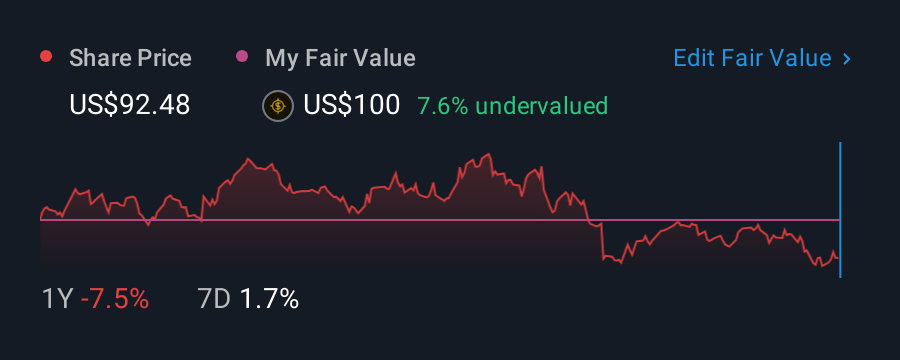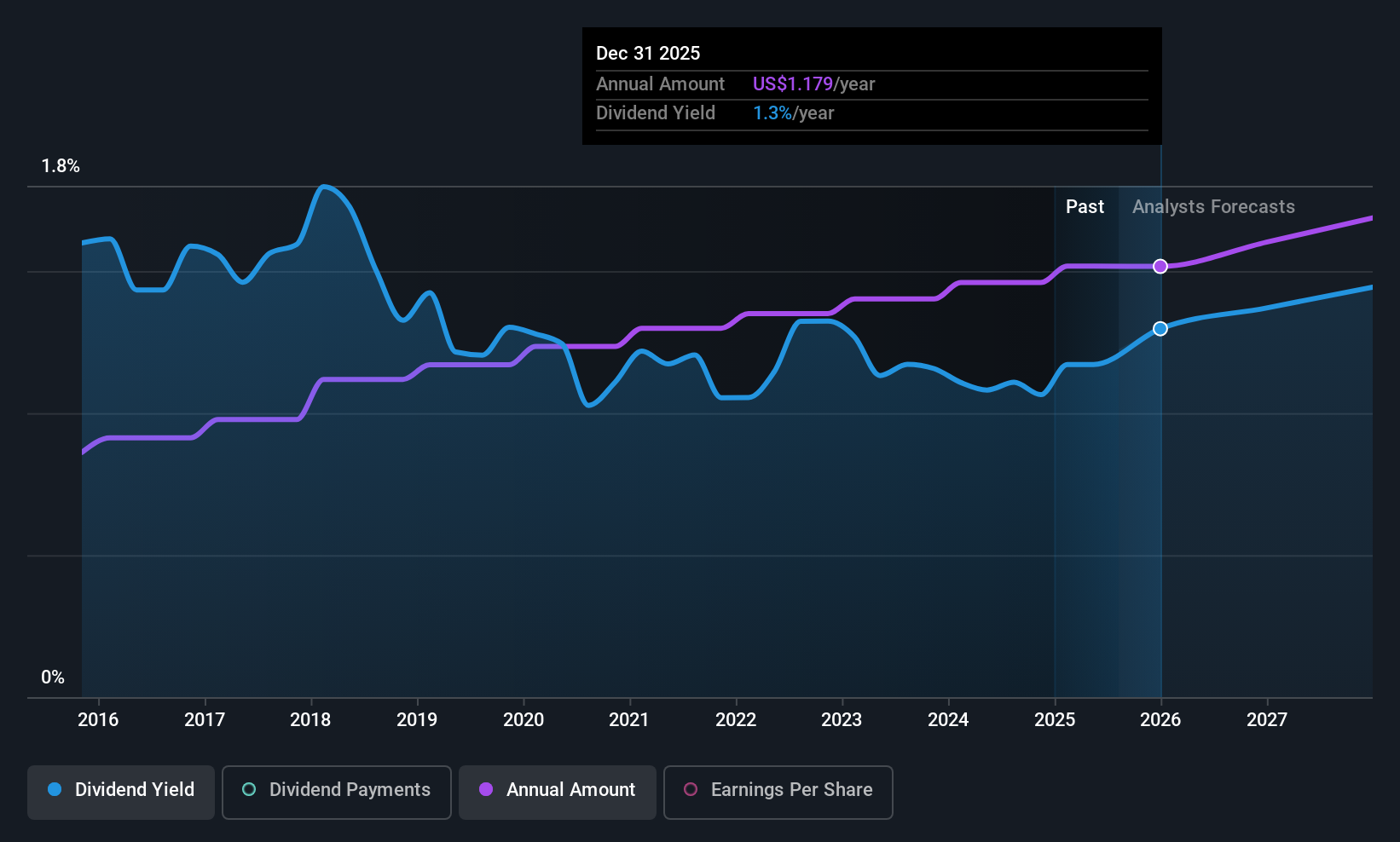

Church & Dwight Co., Inc. (NYSE:CHD) is about to trade ex-dividend in the next four days. The ex-dividend date is usually set to be one business day before the record date, which is the cut-off date on which you must be present on the company's books as a shareholder in order to receive the dividend. The ex-dividend date is important as the process of settlement involves a full business day. So if you miss that date, you would not show up on the company's books on the record date. Accordingly, Church & Dwight investors that purchase the stock on or after the 15th of August will not receive the dividend, which will be paid on the 2nd of September.
The company's next dividend payment will be US$0.295 per share, on the back of last year when the company paid a total of US$1.18 to shareholders. Calculating the last year's worth of payments shows that Church & Dwight has a trailing yield of 1.3% on the current share price of US$90.92. If you buy this business for its dividend, you should have an idea of whether Church & Dwight's dividend is reliable and sustainable. As a result, readers should always check whether Church & Dwight has been able to grow its dividends, or if the dividend might be cut.
Dividends are typically paid from company earnings. If a company pays more in dividends than it earned in profit, then the dividend could be unsustainable. Church & Dwight paid out 54% of its earnings to investors last year, a normal payout level for most businesses. Yet cash flow is typically more important than profit for assessing dividend sustainability, so we should always check if the company generated enough cash to afford its dividend. It distributed 30% of its free cash flow as dividends, a comfortable payout level for most companies.
It's positive to see that Church & Dwight's dividend is covered by both profits and cash flow, since this is generally a sign that the dividend is sustainable, and a lower payout ratio usually suggests a greater margin of safety before the dividend gets cut.
Check out our latest analysis for Church & Dwight
Click here to see the company's payout ratio, plus analyst estimates of its future dividends.

Have Earnings And Dividends Been Growing?
Companies with falling earnings are riskier for dividend shareholders. Investors love dividends, so if earnings fall and the dividend is reduced, expect a stock to be sold off heavily at the same time. That's why it's not ideal to see Church & Dwight's earnings per share have been shrinking at 2.9% a year over the previous five years.
The main way most investors will assess a company's dividend prospects is by checking the historical rate of dividend growth. In the past 10 years, Church & Dwight has increased its dividend at approximately 6.6% a year on average. Growing the dividend payout ratio while earnings are declining can deliver nice returns for a while, but it's always worth checking for when the company can't increase the payout ratio any more - because then the music stops.
Final Takeaway
Should investors buy Church & Dwight for the upcoming dividend? The payout ratios are within a reasonable range, implying the dividend may be sustainable. Declining earnings are a serious concern, however, and could pose a threat to the dividend in future. Overall we're not hugely bearish on the stock, but there are likely better dividend investments out there.
If you want to look further into Church & Dwight, it's worth knowing the risks this business faces. To help with this, we've discovered 2 warning signs for Church & Dwight that you should be aware of before investing in their shares.
A common investing mistake is buying the first interesting stock you see. Here you can find a full list of high-yield dividend stocks.
Have feedback on this article? Concerned about the content? Get in touch with us directly. Alternatively, email editorial-team (at) simplywallst.com.
This article by Simply Wall St is general in nature. We provide commentary based on historical data and analyst forecasts only using an unbiased methodology and our articles are not intended to be financial advice. It does not constitute a recommendation to buy or sell any stock, and does not take account of your objectives, or your financial situation. We aim to bring you long-term focused analysis driven by fundamental data. Note that our analysis may not factor in the latest price-sensitive company announcements or qualitative material. Simply Wall St has no position in any stocks mentioned.